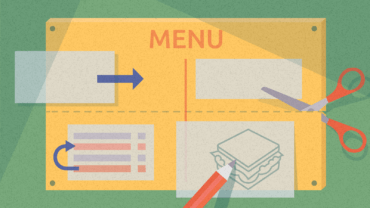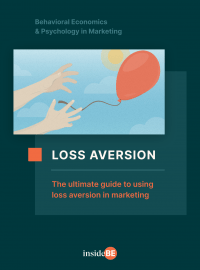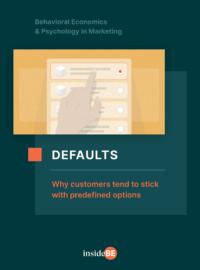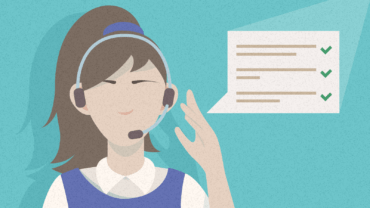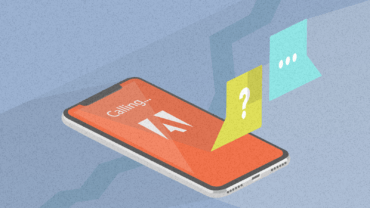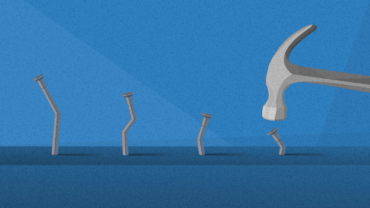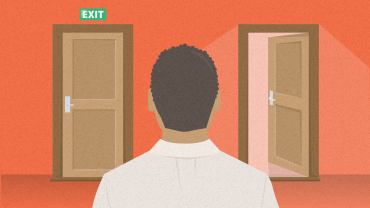Status Quo Bias – Everything You Need to Know
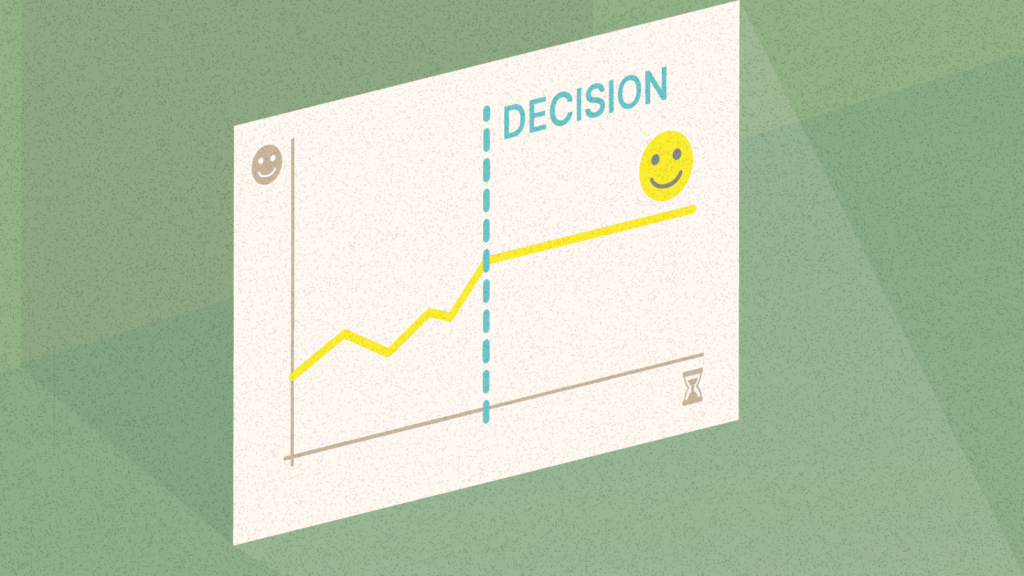
Status quo bias is our tendency to stick to our old ways. But how does it work and why? Learn more about the phenomenon and how you can avoid it from these case studies, examples, and business uses.
Article content:
Defining status quo bias
Status quo bias is a subconscious, cognitive bias that causes us to stick with the way things are and avoid change. This can result in us missing out on more beneficial options, all because we’re simply used to something in particular or we tend to go with the default or pre-set option.
Every novelty or option that differs from the current status quo can be perceived as uncertainty and potential loss. There are many more biases that make people stick to the status quo and you’ll learn more about them in this article as well.
Perhaps unshockingly, research has also shown that our bias grows even stronger when the number of choices we have increases.
How does status quo bias work?
Everyone has their own favorite pizza. Let’s say yours is a Margherita (a classic choice!). Now imagine taking your significant other out for a romantic dinner at that new, fancy, Italian restaurant in town. You both dress to the nines, sit down at a fancy dinner table, and the waiter hands you their fancy-looking menu.
What you weren’t expecting was the number of pizzas they have on offer, all with fancy names you’ve never even heard of. Overwhelmed by all the choices, you decide to go with what you know: the Margherita. After all, it’s a safe bet.
Now for a slightly different scenario. Your iPhone finally craps out on you and refuses to turn on. There’s a silver lining to this: now you can buy yourself a brand-new phone! But there are so many options to choose from, how can you even decide on what brand to go with? Should you get a Samsung with 100x zoom? The Google Pixel with speech-to-text features from another dimension? Or some kind of flip phone?
Chances are you’ll be choosing nothing of that sort. As a loyal, lifelong iPhone user, you’re probably going to stick with what you know: Apple.
This is how people work. We stick to what we know. But why though?

Discover ground-breaking ideas and fascinating solutions.
Why does it work?
Loss aversion
The first reason why we prefer the status quo is loss aversion. Simply put, we hate experiencing losses about twice as much as we enjoy experiencing gains. In other words, you would be twice as sad if you lost $20 as you would be happy if you found that same exact amount.
With our iPhone example, you might simply worry you’ll be losing out on quality: a rival android phone might not be as snappy. Or worse: it might not have the features you’re so accustomed to having. After all, you use these features every day so losing them might not be so pleasant.
Risk and ambiguity aversion
Loss aversion is tightly connected with both risk aversion and ambiguity aversion: we prefer certain situations with low risk over the uncertain and risky ones. But that’s not all that surprising, am I right?
Trying something new means trying something we don’t know. It’s uncertain and risky: how should you be expected to know whether you’ll like that pizza if you don’t know half the ingredients on it? There’s a pretty good chance you won’t like it at all.
Unknown options translate to unknown outcomes. And when the outcome is unclear, it’s perceived as a danger from an evolutionary point of view.
Unknown options translate to unknown outcomes. And when the outcome is unclear, it’s perceived as a “Danger, Will Robinson!” from an evolutionary point of view. So, what will we do? Stick to what we know!
Mere exposure effect
All of the previous biases mentioned cause us to stick with the status quo. And what happens when we do that? We like our choice even more. That’s what the mere exposure effect is all about, which can be defined as our tendency to like things simply because we’re familiar with them. To complete the vicious cycle, as we like it more and more, the status quo bias just gets stronger.
Basically, that’s why advertising works. Ads show us the same products over and over again to the point where after a while, we feel like we know them quite well. There’s absolutely more to it than just that makes us want to buy, but mere exposure plays a huge role.
Cognitive miserliness
In psychology, there’s a term known as “cognitive misers.” Don’t worry, it affects all of us, including the people who coined the term. Essentially, it has to do with the fact that if there’s something people hate to waste, it’s time and effort. That’s why, in most cases, we rely on the so-called System 1. It’s our intuitive, automatic, subconscious shortcuts we use to make quick decisions with minimum effort.
And guess what requires the least amount of effort? Not making any decision at all or sticking to what we know. Hence the status quo bias.
On the other end of the spectrum, there’s System 2: slower, logical, analytical, and effortful thinking. Using it may lead us to better choices, yes. But as using it is hard and takes time, we prefer the more convenient and easier methods found in System 1 anyway.
Sticking with the default option
Our cognitive laziness also leads to our tendency to stick with a pre-set option. It’s called default bias and it’s very similar to the status quo bias. These terms are often used as synonyms.
Defaults
The default choice is an option that’s selected if the user does nothing. Defaults are most effective in unfamiliar and complicated situations. They allow people to decide easier and faster.
Although, default bias might refer to more than just the common ways of doing things simply because we’re already used to them, but also to sticking with a choice that somebody else has made for us.
Let’s rewind to the iPhone example one last time. Remember the last time you bought a new one? Pretty exciting, wasn’t it? What did you do first? Adjust the font size? Color intensity? Change your alarm’s ringtone? The chances are you did none of that. You rolled with the default settings.
Not because you were used to it, the settings might differ from the ones on your 6-year-old model. But simply because it was pre-set for you. Changing it would require time and effort as there are plenty of customization options you could go through.
That’s why with every subscription plan, there’s a pre-set, highlighted option of the plan that the company wants you to choose. Whether it’s a streaming service, fitness app, or insurance plan, it works well.
Status quo bias experiments
Status quo bias in choosing electricity service
In the research of Hartman, Doane, and Woo, the authors looked at a possible status quo bias among consumers choosing their electricity service.
First off, people had to rate the reliability of their service, meaning whether they experienced some power outages, how often it happened, and so on. Then the customers were divided into two groups. Group 1 had only those who reported high reliability with their service while Group 2 consisted of those who reported low reliability.
Both groups were then asked to choose from six possible combinations of service reliabilities and rates. Their current service represented the status quo.
To the surprise of no one, people who stated high reliability with their service were mostly prone to stick with their choice; 60.2% chose their current service. That makes sense. However, the results didn’t differ that much in Group 2. 58.3% of people who stated low reliability of their current service chose it again.
Opt-in and opt-out options in organ donations
The second one is a classic and it comes from Johnson and Goldstein. The authors asked people whether they would be willing to become organ donors when they died.
However, the question was asked differently between the two groups. Participants had to either opt in, meaning the default option was not to become a donor and they needed to register as one if they wanted to be one. Others were in an opt-out group, with the default set as being organ donors, so they needed to deliberately choose not to become donors if they didn’t want to.
When participants had to opt into becoming an organ donor, only 42% did so, whereas 82% of those who had to opt out stuck with the default option and became donors.
When participants had to opt into becoming an organ donor, only 42% did so, whereas 82% of those who had to opt out stuck with the default option and became donors.
This example with donors has far-reaching consequences, by the way, as different countries have different strategies for organ donation. Check out this video of Dan Ariely digging deeper into the Johnson and Goldstein study, discovering how a simple change in default options might save lives:
Source: YouTube
Build-up vs scale-down systems
150 students at the University of Iowa were asked to “build” their own pizza. Students in the Build Up condition were able to design their own pizza from scratch by adding toppings to a “basic” cheese pizza that cost $5.00. They could select from a menu of 12 toppings in which adding one ingredient cost 50 cents.
In the scale-down version, the default setting was changed. Students were presented with a “deluxe ” pizza with all 12 ingredients already included for $11 altogether. They were asked to design their perfect pizza by checking off the items they wanted to exclude from the list of ingredients.
Results showed that when the default was just a basic pizza with no ingredients, people added just 2.71 ingredients on average. However, when there were a lot of ingredients already on the pizza, people ended up with more ingredients at the end: 5.29 on average. All because the default setting was different.
History of the status quo bias
It didn’t take people long to notice that some folks are just more conservative and like sticking to the old way of doing things. This is the “if it ain’t broke, don’t fix it” mentality. Psychologists conceptualized it as a personality trait in the 80s.
But, status quo bias, even if more prevalent in conservatives, affects everyone. It was first introduced in a paper by Samuelson and Zeckhauser where the authors presented people with several hypothetical situations. One group of people were given a neutral version, such as:
“You are a serious reader of the financial pages but until recently have had few funds to invest. That is when you inherited a large sum of money from your great-uncle. You are considering different portfolios. Your choices are to invest in: a moderate-risk company, a high-risk company, treasury bills, municipal bonds.”
Others were given the same problem but with one of the options designated as the status quo.
“…That is when you inherited a portfolio of cash and securities from your great-uncle. A significant portion of this portfolio is invested in a moderate risk company…”
The design was the same for all these hypothetical situations. The only thing the authors changed was the content. What they found out was that the status quo option was the most popular in all of the situations.
As the number of alternatives increased, the status quo gained an even greater advantage. That means that if the people felt more and more overwhelmed, they relied on System 1 even more.
Interestingly, as the number of alternatives increased, the status quo gained an even greater advantage. That means that if the people felt more and more overwhelmed, they relied on System 1 even more.
After that, status quo bias gained popularity not just among academics, but also in business. But more on that later.
How to avoid status quo bias
Try new things
As was mentioned earlier, the status quo is stronger among conservatives, and less prevalent among people who are open to new experiences. And that’s the first piece of advice: seek a new experience.
Try new food, travel a little bit to get to know different cultures. Doing such things deliberately will help mitigate the status quo bias effect.
Think of what you’re losing by sticking with the default
Remember loss aversion? It can come in handy here. Whenever you’re faced with a situation that has a wide set of different options, think of what you might be losing by not taking action.
It’s quite possible it’s your time or even your money. Were you offered a new fund investment opportunity? Think of how much money you’ll lose in five years if you don’t take it. Did you receive an e-mail ad from your grocery delivery service? Think about how much time you waste every time you go to the supermarket.
Make a plan of action
The reason you might be sticking with the old ways of doing things is that trying something new seems like a hard thing to do. For instance, you might be considering switching your car insurance provider, but the online form for the new one is way too long and seems like it will take forever to fill out.
Plan for it in advance. Put it in your calendar or planner, set a reminder or alarm on your phone, whatever works best for you. Research shows that whenever we procrastinate, making a plan of action increases the likelihood of us actually doing it.
Case Studies
The New Coke disaster
In the 80s, Coca-Cola found itself in trouble. As a reaction to losing a significant portion of the market share for cola, they came up with “New Coke.”
It wasn’t just at a whim, they conducted several blind tests where they compared New Coke with the classic one and the results were astonishing. It seemed like people loved New Coke. And so they launched it onto the market.
Long story short, it was a disaster. The company’s hotline received more than 40,000 calls after the change – that’s an increase of more than 1,100 calls a day. There were public protests, boycotts, and they faced criticism from many public figures. And not just anyone, we’re talking David Letterman-kind-of public figures.
Even when their blind tests were a remarkable success, it was blind, literally. Customers didn’t know what they were tasting. As soon as they knew that it was some kind of a new Coke, not the one they loved, they were furious. Simply, because it was something new.
Automatic seat assignment
A large national railroad in Europe changed its website so that seat reservations would automatically be included with ticket purchases at an additional cost of a couple of euros, unless the customer unchecked a box on the online booking form.
Before the change, only 9% of tickets included reservations, in contrast with 47% after the change.
Before the change, only 9% of tickets included reservations, in contrast with 47% after the change. This resulted in an additional $40 million in annual revenue and is an example of a simple change in the default setting.
This one might be tricky though, as the railroad didn’t check customer satisfaction before and after the change. It’s possible that some customers didn’t like it, as maybe they didn’t notice that they were paying more than necessary.
Status quo in retirement plans
In their original study, Samuelson and Zeckhauser pointed out the very dangerous status quo in the retirement plans of TIAA-CREF’s clients. As people get old, they should move from the more risky funds to the safer ones. However, many companies still require clients to change the funds themselves.
As status quo bias kicked in, it resulted in over half of all plan participants having too many risky stocks in their portfolios, which could endanger their future savings after they retire.
Nowadays, many companies luckily recognize people’s tendency to not act, and so they provide products that move their assets between the risky and safer funds automatically.
How to use it in business
Implications for customer service
Remember: customers don’t like changes. The goal of your customer service is therefore clear. Once the customers call you, the default setting is for them to stay. The main job of your customer service team is to not make them angry and to mitigate disloyalty.
To achieve that, agents should be able to identify the relevant needs and concerns of any customer they’ve had on the line. For example, in a case study conducted by the CEO of Pragmadik, Andrea Olson, they helped an insurance company convince 30% more customers to use certified repair shops.
Make desirable behavior as easy as possible
Once you want to break through the current status quo of your potential customers and make them switch to your product, the switch needs to be as easy as possible.
Every barrier the customers face, every click they need to make, just makes the desired behavior harder, and the chances of them actually changing their status quo bias decrease as a result.
Every barrier the customers face, every click they need to make, just makes the desired behavior harder, and the chances of them actually changing their status quo bias decrease as a result.
Use loss aversion to your advantage
Loss aversion is an effective tool, so don’t forget to include it in your inventory. It can come in handy when you need to break the status quo of your customer.
Instead of persuading customers to go with your product instead of their current one, highlight what they’re losing out on by sticking with their choice. Does your insurance product provide the best value on the market? Show your customers how much money they’re currently losing: per day, per month, per year.
For example, there was a study done on homeowners who got the chance of getting a free energy audit. One half was offered it in a different way than the other half. The first half was told:
“If you will insulate your home fully, you’ll be able to save 50 cents a day, every day.”
The other half was told:
“If you fail to insulate your home fully, you’ll lose 50 cents a day.”
150% more people chose to insulate their homes under this loss framing rather than under the gain framing.
Create an enhanced active choice
An easy and effective way of dealing with status quo bias is making your customer explicitly choose between options. Even if the options are just yes or no. This way, they don’t have the option to simply do nothing.
To stick with the example from above, it would look like this:
Do you wish to insulate your home and save 50 cents a day, every day?
- Button with option A) Yes, I want to insulate my home
- Button with option B) No, I don’t want to insulate my home
Using an active choice set-up forces the customer to stop and think for a moment and consider what decision they’re about to make.
Even if it can be effective all by itself, you can level it up with an enhanced active choice. It means you emphasize the damage they can cause themselves by sticking with the status quo:
Do you wish to insulate your home and save 50 cents a day, every day?
- Button with option A) I want to insulate my home
- Button with option A) No thanks, even if I lose 50 cents every day
Check how Optinmonster used this principle to make their customers buy:

Source: InsideBE
There’s nothing like enough conversion, is there?
Change the default option
This one is probably the most straightforward. When customers are faced with multiple options, pick the one you want them to choose and set it as the default option. Whether it’s a subscription plan or an insurance product, simply tick the box you want the customer to choose, and they’ll be more likely to stick with it.
You’d be surprised how many times companies ignore this or set a wrong default that naturally leads customers to other options.
For example, one bank in Europe wanted their customers to opt for a new account package. However, they set the wrong default in three different key areas. It turned out that setting the proper default option helped the bank increase sales of their new current account packages by 387%.
Summary
What is status quo bias?
Status quo bias is our tendency to stick with things the way they are and not change them. Sticking to what we know makes us certain we won’t lose anything. It’s particularly strong in situations where we’re overloaded with too many options.
How to avoid the status quo bias?
Status quo bias is more pronounced in people who are generally less open to new experiences. That’s why it’s important to try new things, get out of our comfort zone, and seek a new experience.
By doing so, we’ll become less prone to sticking with the old ways even in important decisions.
Whenever you’re offered a new opportunity you’re not that keen about, think about what you might lose out on if you don’t take it. And if you’re not keen on it because it looks too hard to do, make a plan of action. When we plan something in advance, we’re more likely to do it.
How to use status quo bias in business?
The easiest ways for you to use status quo bias to your business’s advantage are:
- Use loss-aversion framing to break customers away from the status quo. Highlighting what they’ll lose by sticking to things they’re used to can make them take action.
- Use an enhanced active choice set-up to slow customers down and make them conscious of the consequences of their choice.
- Simply change the default option. Making the option you want your customers to choose as a pre-set will make them more likely to stick with it.

